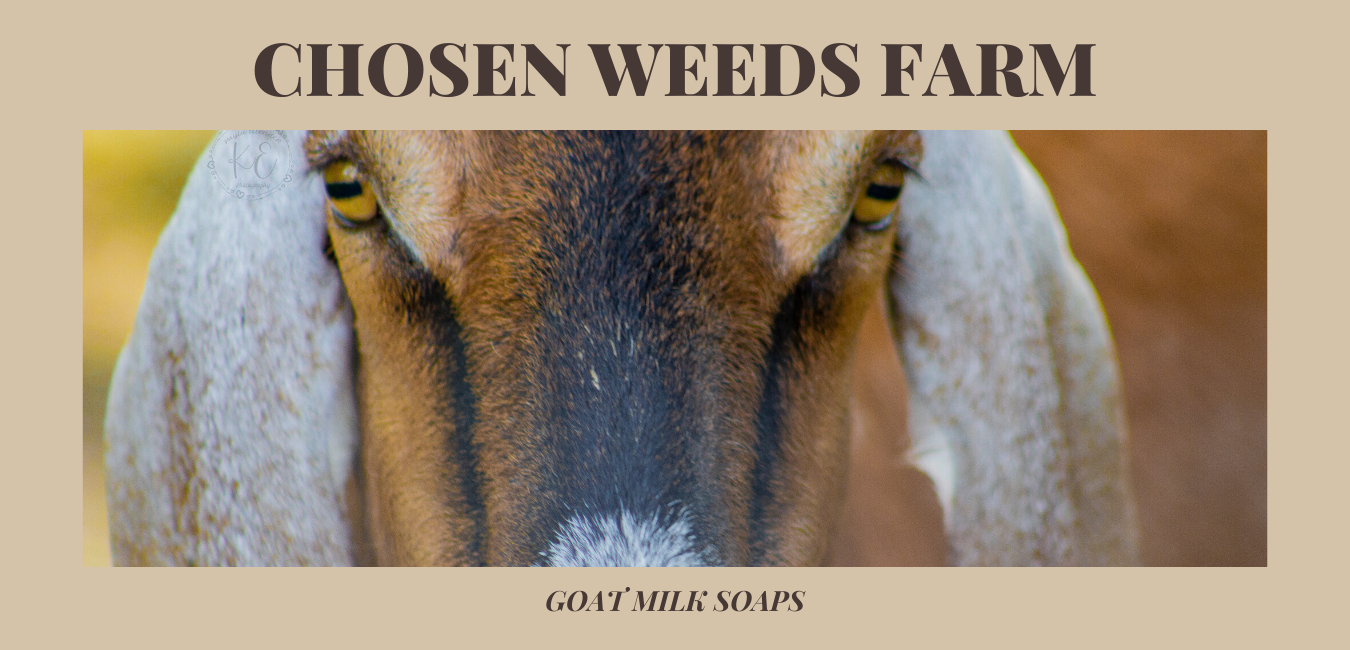When It Comes to Homemade Soaps

They say the patience is a virtue (man, that is so clique’)….. but when you’re waiting for something as good as our 100% raw goat milk soaps, it can be really hard. One of my favorite parts of the soap making process is seeing what the bars will look like cut. It’s always different even though I might follow the same methods time and time again.
Many times I have been asked why it takes so long for the soaps to be ready to sell. Well, get ready, because you are about to get a chemistry lesson. Oh, dear, I hope that I don’t lose anyone……Don’t worry, it won’t be complicated.
There are several processes for making soap, including hot and cold processing, and melt and pour. We use the cold process method. This means making the soap completely from scratch, which means that I have complete control of the ingredients added. Simply put, specific amount of oils, our soaps usually include olive oil, coconut oil, lard, and castor oil (some of our soaps will also include mango seed butter, shea butter, ghee, and avocado oil), are mixed with an alkali (Sodium Hydroxide or Lye). An accurate recipe is necessary in order to ensure that the right amount of lye is used for the specific oils selected. Lye is highly caustic and a miss-measured amount can lead to a bar of soap that is anything but pleasant to use.
The result is a chemical process called saponification, by which the composition of the oils changes with the help of the lye to create a bar of soap.
Saponification is an exothermic reaction (heat producing), and thus caution must be taken when making soap. The fat and oils (fatty acids) react with the lye to produce glycerin and soap (not to be confused with detergent that is found in most store bought “soaps”). Not all the fat is used up in the reaction. This is important because it makes the soaps easier to cut, leaves your skin feeling soft and smooth, and ensures that all the lye (a skin irritant) is utilized. I know y’all want that.
The saponification process results in about 75% soap, and 25% glycerin. In homemade soaps, the glycerin is left in, as it acts as an emollient (skin softener) and adds a nice feel to the soap [1]. Did you know that in most commercial soaps, the glycerin is taken out and then sold back to companies that make lotions? Hmmmm……chew on that for a bit.
Once the soap has been taken out of the molds, it is cut and the curing process begins. This is where the waiting, and magic, happens. The process of curing soap allows the excess moisture in the bars to evaporate, leaving a harder and longer-lasting bar. This takes anywhere from 4-8 weeks. The length of time depends on how much water is in the soap.
Everyone is always wondering how long the bar of soap will last. That depends on how long it was cured and if it is allowed to dry out while not in use. The earlier a bar is used (i.e. before the 4-6 weeks curing time is up), the softer and slimier it will be. It is still safe, but just won’t last as long.
Well, there you have it! We want to give our customers the best quality soap possible. We appreciate those that are patient and wait for their favorite bars to be ready.
Are you ready to try our hand-made soaps? The fall line up is ready! These include Cinnamon Swirl, Banana Bread, and Pumpkin Spice. They are available exclusively at the Furniture Queen or right from the farm.

Sources:

Permalink //
How can I purchase your soaps on line? Please contact me by email or cell 409-926-3667.
Thank you
Permalink //
I sent you an email and a text. Right now we are not set up to order online. If you let me know what you would like, i can get it to you.